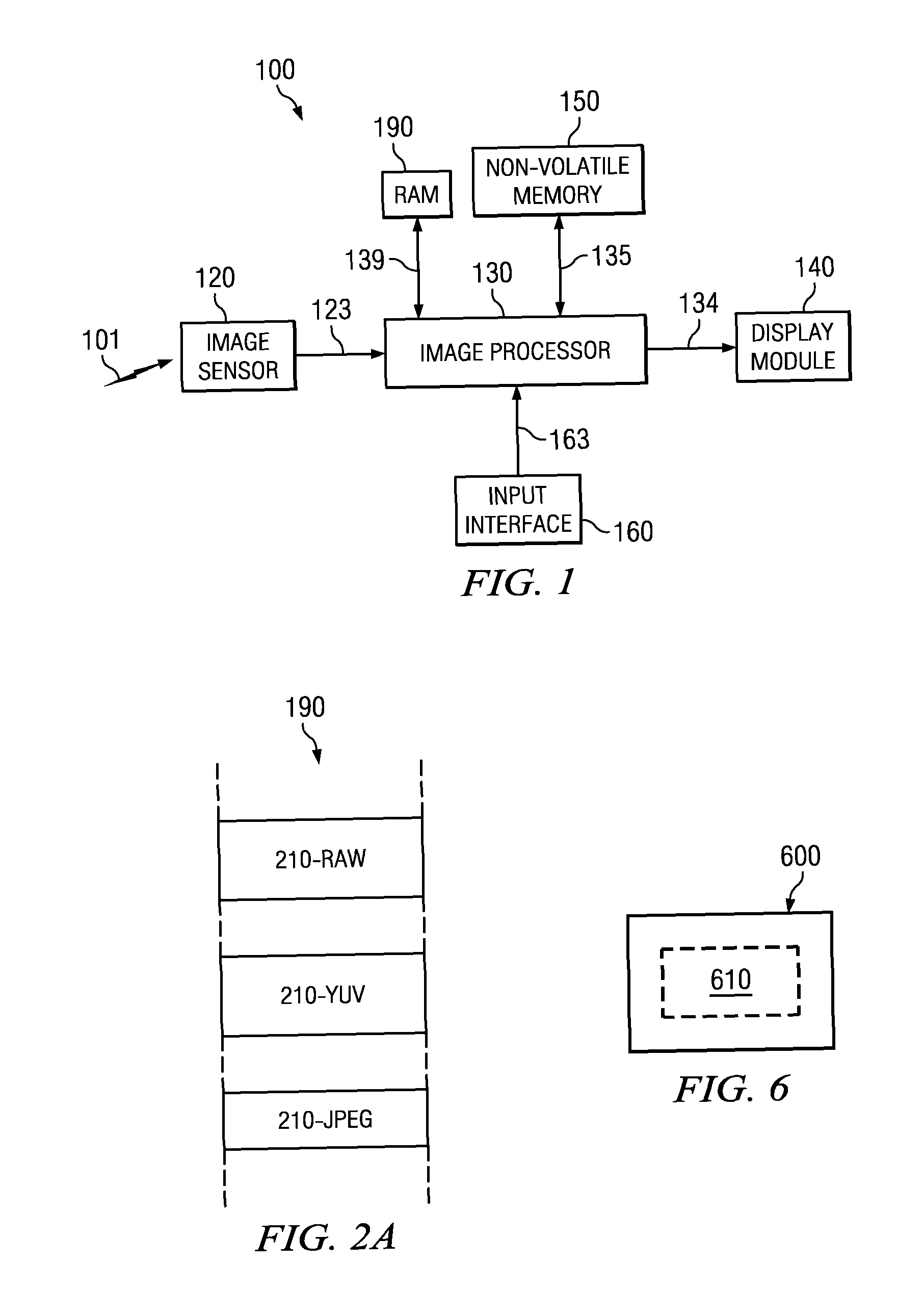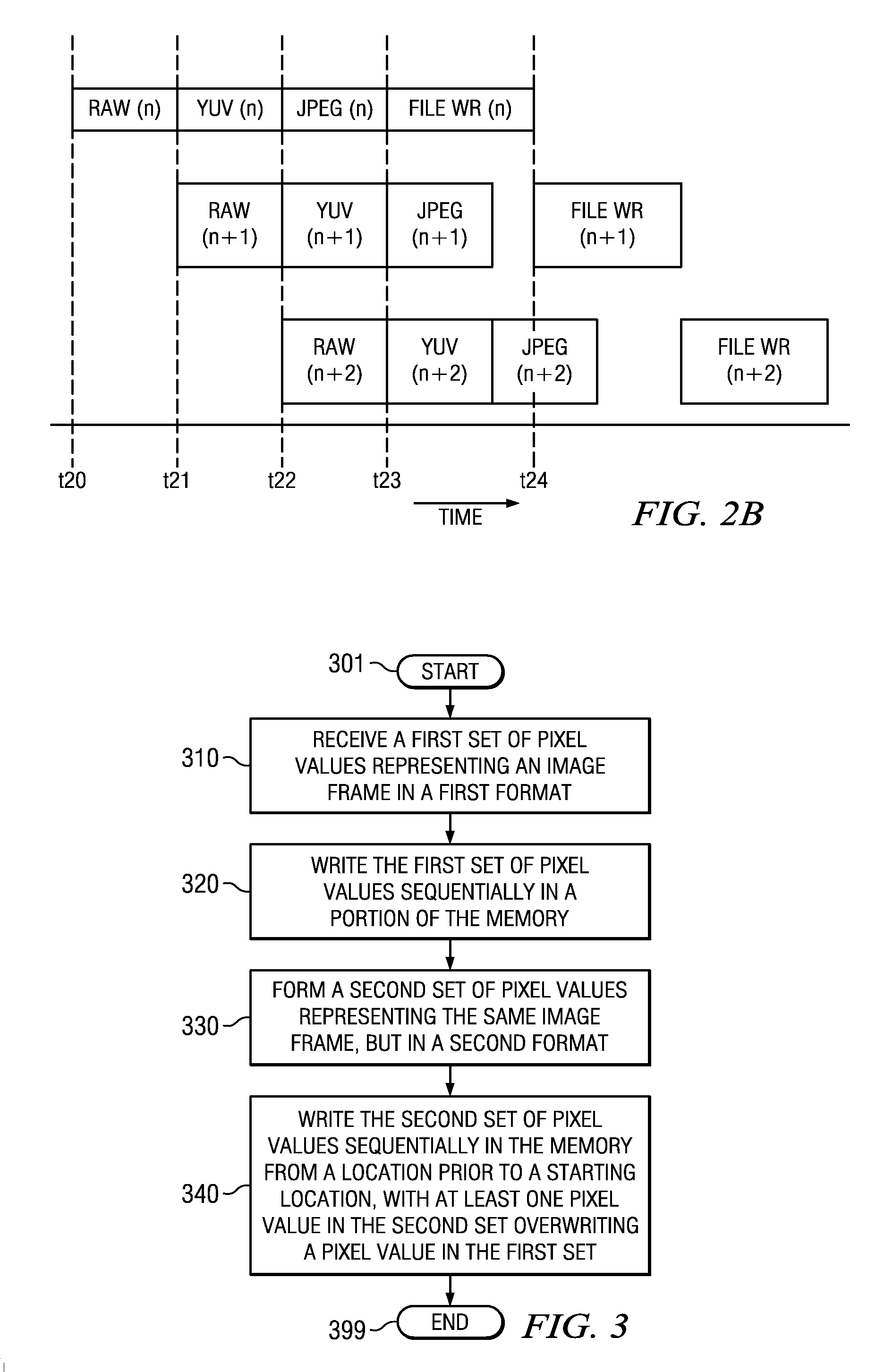Processing image frames in different formats with reduced memory requirements in digital still cameras
a digital still camera and image frame technology, applied in the field of digital still camera processing image frames, can solve the problems of digital memory requirements, and achieve the effects of reducing memory requirements, reducing memory requirements, and reducing memory space requirements
- Summary
- Abstract
- Description
- Claims
- Application Information
AI Technical Summary
Benefits of technology
Problems solved by technology
Method used
Image
Examples
Embodiment Construction
[0023]Various embodiments are described below with several examples for illustration.
[0024]1. Example System / Device
[0025]FIG. 1 is a block diagram illustrating an example device in which several features of the present invention may be implemented. The example device is shown containing only representative systems for illustration. However, real-world environments may contain many more systems / components as will be apparent to one skilled in the relevant arts. Implementations in such systems / components are also contemplated to be within the scope and spirit of various aspects of the present invention. Digital still camera 100 (camera 100) is shown containing image sensor 120, image processor 130, display module 140, non-volatile memory 150, input (I / P) interface 160, and RAM 190.
[0026]Image sensor 120 may contain an array of sensors, which together generate digital data (pixel values, for example, in Bayer format) representing an image 101. Image sensor 120 forwards the pixel values...
PUM
 Login to View More
Login to View More Abstract
Description
Claims
Application Information
 Login to View More
Login to View More - R&D
- Intellectual Property
- Life Sciences
- Materials
- Tech Scout
- Unparalleled Data Quality
- Higher Quality Content
- 60% Fewer Hallucinations
Browse by: Latest US Patents, China's latest patents, Technical Efficacy Thesaurus, Application Domain, Technology Topic, Popular Technical Reports.
© 2025 PatSnap. All rights reserved.Legal|Privacy policy|Modern Slavery Act Transparency Statement|Sitemap|About US| Contact US: help@patsnap.com



